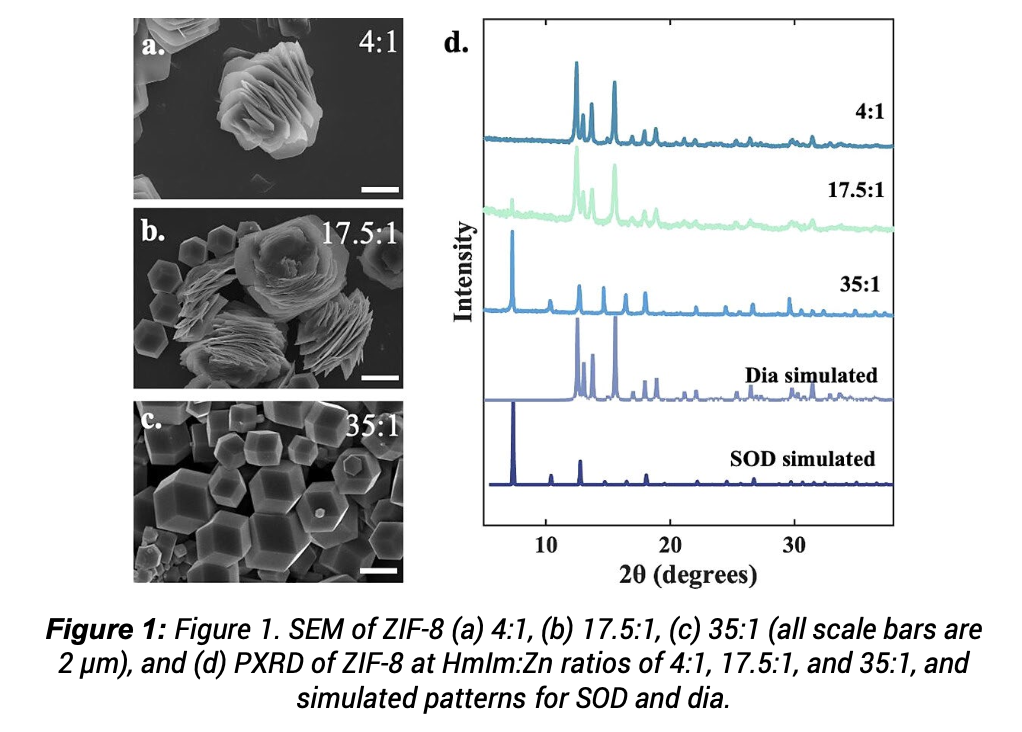Understanding the Nucleation and Growth of ZIF-8 Polymorphs


Achievement
The study aimed to investigate the formation mechanism of two commonly observed polymorphs, sodalite (SOD) and diamondoid (dia), in a model zeolitic imidazole framework-8 (ZIF-8). Through a combination of time-resolved in situ wide-field X-ray scattering, electrospray ionization mass spectrometry, and time-resolved cryogenic transmission electron microscopy, the researchers elucidated a clear correlation between the size of prenucleation clusters (PNCs) and the final polymorph. They discovered that SOD nucleates rapidly via the formation and aggregation of amorphous particles containing a significant amount of 3Zn clusters, while dia nucleates more slowly through the formation of stable amorphous particles composed of 2Zn clusters. This detailed understanding of the nucleation mechanism and factors influencing polymorph formation contributes to the broader knowledge of metal-organic framework (MOF) polymorphism and aids in tailoring crystal properties.
Importance of the Achievement
The investigation of polymorph formation in MOFs, such as ZIF-8, is crucial for understanding their structure–activity relationships and optimizing their properties for various applications. By uncovering the mechanisms governing polymorph selection, researchers can design synthetic conditions to tailor MOF structures with desired functionalities. This study addresses a significant knowledge gap in MOF nucleation and growth mechanisms, particularly regarding the formation of different polymorphs. The findings highlight the importance of studying prenucleation phases and provide insights into the role of PNCs in determining final polymorphs. Ultimately, this deeper understanding of polymorph control in MOF systems facilitates the development of high-performance materials with tailored properties, contributing to advancements in fields such as catalysis, gas separation, and drug delivery.
Synergies with BioPACIFIC MIP
This achievement is synergistic with BioPACIFIC Materials Innovation Platform (MIP) through the utilization of its X-ray facility, to understand the time-resolved crystallization kinetics of ZIF-8. By leveraging BioPACIFIC MIP's resources, the researchers were able to integrate advanced characterization techniques with their investigations.